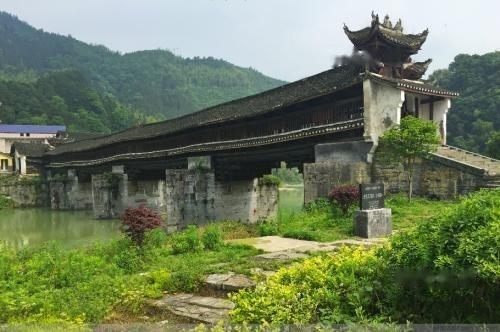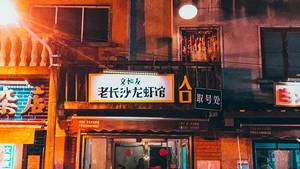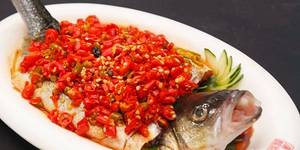Exploring the origin of the Tea Horse Ancient Road in Yiyang
3 cities |
8 attraction(s) |
total distance 421
km
 TIPS
TIPS
Day1
Day2
Day1: Changsha > Yiyang
6 attraction(s) ·
209 km
2
Anhua County has the largest and best-preserved wooden corridor bridge (Qing Dynasty). It is a key county-level cultural relic protection unit. The bridge piers are made of pure and uniform giant stones. On top of the stone piers, there are giant crowwood beams, and on top of the beams is the main corridor bridge composed of thirty-nine interconnected wooden houses. The roofs are covered with tiles to shield against wind and rain. The ends of the bridge have flying eaves and ornate carvings. When looking at the corridor bridge from afar, either upstream or downstream, it appears like a dragon and a rainbow, lying across the Maxi River, bringing a sense of joy and excitement.
4
km
4
Canyon between Lianhuan Village at the foot of the mountain and Gaocheng Village at the mountain top. Treacherous terrain, towering rocks, flowing streams. A treasure trove of plant species and a great place for exploration, rock climbing, and canyoning. The danger of the canyon and the cool mountain breeze create a sense of excitement and tension. The main mode of travel is hiking, with options for canyoning, rock climbing, water crossings, bamboo rafting, and cave exploration.
1
km
5
Simple countryside restaurant with fresh ingredients, safe to eat, friendly owner, and beautiful scenery that enhances the beauty of the restaurant.
4
km
6
A quiet and elegant mountain hotel, it must feel great to fall asleep to the sounds of insects and birds.
Day2: Yiyang > Xiangtan
2 attraction(s) ·
212 km
1
Tea Horse Road - The sound of cars outside the mountain is endless, and the horse teams ring their bells in the mountains
The Tea Horse Road is a mysterious ancient road that stretches between the steep mountains and valleys of Anhua. For thousands of years, countless horse caravans have silently traveled on this road, and the distant sound of horse bells echoes in the valleys, rivers, and villages, creating a fusion of different ethnicities and cultures. Today, the footprints of horses on the Tea Horse Road are still visible, and the bridges spanning the streams still stand tall in the wind and rain, as if reminiscing about that historical scenery.
The Tea Horse Road refers to the transportation route from the tea-producing areas of the mainland to the minority ethnic regions in Northwest and Southwest China for tea and horse trade from the Tang and Song Dynasties to the Republic of China. In history, Yiyang had developed transportation routes and was connected to the Tea Horse Road. For thousands of years, hard-working horse caravans traveled on the ancient post roads, breaking the tranquility of the forests and valleys with the clear sound of bells and the galloping of horses. Day after day, year after year, they opened up a trade route to the border. The black tea, which made Yiyang tea famous around the world, is the highlight of the Tea Horse Road, with renowned varieties such as Fu Brick Tea, Qianliang Tea, Black Brick Tea, and Sanjian Tea.
The horse caravans and the Tea Horse Road brought together logistics and people. Along the Tea Horse Road, many towns and post stations naturally formed at the water and land junctions, facilitating the trade of goods for the caravans and passing merchants, as well as accommodation and rest. Gaochengdong, Jiangnan Ancient Town, Yongxi Bridge, Dongshi Old Street, Tangjia Temple, Xinhua Zunshang, Baixi, Longhui Tantou, and Baoqing are the old market towns that sprouted and developed along the Tea Horse Road.
The Tea Horse Road is a transcendent path of humanistic spirit. Every time the horse caravans embark on their journey, it is an experience of life and death. The perils of the Tea Horse Road are extraordinary, but the magnificent natural landscapes along the way can inspire hidden courage, strength, and endurance, sublimate one's soul, and leave imprints of the ancestral footsteps and horse hoof prints on the Tea Horse Road. Over time, these imprints and memories of ancient times transformed into a stirring national pioneering and entrepreneurial spirit.
"Horse caravan tourism" has now become a well-known tourism brand in China. Nowadays, in Gaocheng and surrounding villages, every household raises horses, with hundreds of them in total. The horses in Gaocheng are typical of the southern variety, not particularly tall, but can traverse the steep mountains. The mountain paths there cannot even be called "paths" from a distance. It's only when you get closer that you can faintly see a winding narrow path amidst the trees. The damp green stone slabs have small potholes, which are traces left by the horses' long-term trampling. The mountain paths are narrow and high, leaning against the mountain on the right and overlooking the gorge on the left. Some steep slopes are almost forty to fifty degrees, and even just glancing at the bottom of the gorge requires enough courage. When two horses meet, one person holding the horse's head protects it, and in excessively narrow places, the horses may need to be pulled up the slope to clear the way, in order to prevent both the other party and their own horses from being startled. Because of the dangerous mountain paths, the scenery in front is filled with a sense of excitement. Every step is thrilling, but the impression left behind is unforgettable.
Riding a horse along the Tea Horse Road beside the Chuanxi River, the crisp sound of horse bells in this poetic and picturesque landscape is like a
212
km
2
The birthplace of the great leader Chairman Mao is a place where you can visit the bedrooms, study rooms, etc. where Chairman Mao lived during his childhood, youth, and early years.


























